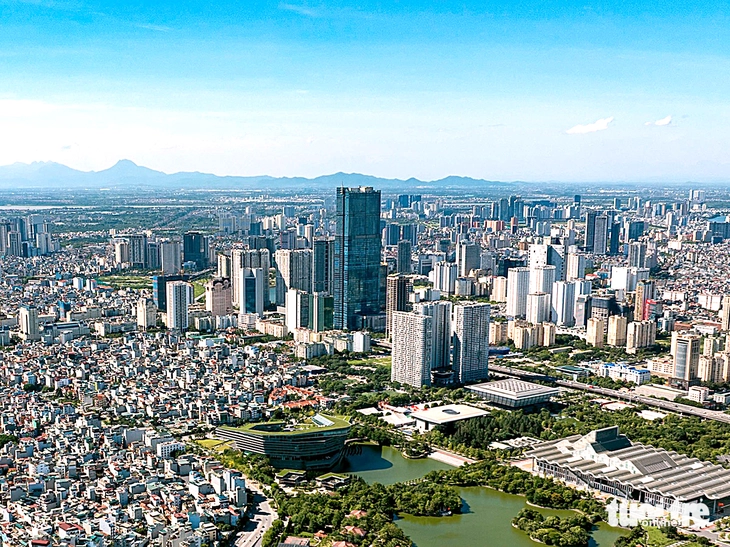
A corner of Hanoi - Photo: NAM TRAN
Notably, in the draft, the Ministry of Construction proposed to amend and supplement the objects of urban classification, including centrally-run cities, areas planned to establish centrally-run cities, urban areas of provinces and cities, areas planned to establish wards and special zones.
The classification system includes 3 types I, II, III; does not evaluate special type and type V urban areas, and also eliminates type I belonging to provinces to avoid overlap.
Urban type, urban system
According to the draft, the urban type and urban system including the capital Hanoi and Ho Chi Minh City are special urban types.
A centrally-governed city (excluding Hanoi and Ho Chi Minh City) is a type I urban area. A province that plans to establish a centrally-governed city must be assessed as meeting the criteria for a type I urban area.
Provinces and centrally-run cities have urban areas with boundaries determined according to urban planning, including an independent ward or ward cluster or ward cluster and commune.
The classified area includes the area with the role, location and function of the urban center classified as a type II urban area.
Areas with the role, location and function of a normal urban area are classified as type III urban areas.
Wards and areas planned to be established as wards are assessed to meet the standards of urban development level of type II and type III.
Draft regulations on urban classification criteria for centrally-run cities and provinces planned to establish centrally-run cities.
Provinces planning to establish centrally-run cities must be oriented, planned and invested in construction according to urban development programs and plans that meet the criteria and standards for urban classification.
Urban classification for centrally run cities or provinces planned to establish centrally run cities must meet the requirements specified in Appendix I of this Resolution.
No assessment of special urban classification for the capital Hanoi and Ho Chi Minh City.
In case of establishing a centrally-run city to meet special requirements on territorial management and socio -economic development, within no more than 36 months from the date of the decision on establishment, the Provincial People's Committee must conduct an assessment and classification of the urban area and submit it to the competent authority for recognition.
New proposed classification of urban areas
Regarding the classification of urban areas, the draft clearly states the scope of determining urban areas of provinces and centrally run cities according to the approved general urban planning.
Classify urban areas of provinces and centrally run cities according to the principle of development level for the area. The classified area must have at least one ward that has achieved the corresponding urban development level.
The criteria for classifying urban areas are specified by standards suitable to the objects of urban classification, urban development practices, characteristics and conditions of urban areas with specific functions and characteristics, and ensuring the requirements for quality, smart, connected, efficient and sustainable urban development; detailed regulations are provided in Appendix II of this Resolution.
In case a special zone has an approved urban plan and is invested in and constructed according to the urban development plan, it is classified according to the corresponding type of urban area.
In case of newly formed urban areas, the population must reach at least 20,000 people; the minimum population density standard is 300 people/ km2 ; the non-agricultural labor rate standard must reach at least 40% and other standards must meet the standards of type III urban areas.
The draft amends the criteria for classifying urban areas, reducing them from 5 to 3 groups. Specifically, the role, location and conditions for socio-economic development; level of urbanization; level of infrastructure development and spatial organization.
Add new standards on green cities, smart cities and climate change response.
The draft innovates assessment methods, clearly defining provincial-level standards associated with the role of urban areas within the province, region, and country, and ward-level standards associated with serving people's lives and grassroots administration.
The draft only stipulates standards for types I, II, III, and does not evaluate special types and type V.
Another content, the draft amends the recognition authority, strongly decentralizing to localities.
Specifically, the Prime Minister only recognizes special types. The Ministry of Construction recognizes type I. The Provincial People's Committee recognizes types II, III and wards.
The Government shall specify in detail the procedures, ensuring the principle of "local decision, local responsibility".
Source: https://tuoitre.vn/de-xuat-ha-noi-tp-hcm-la-do-thi-loai-dac-biet-4-thanh-pho-la-do-thi-loai-i-20250919103413391.htm





![[Photo] Prime Minister Pham Minh Chinh chairs meeting to deploy overcoming consequences of storm No. 10](https://vphoto.vietnam.vn/thumb/1200x675/vietnam/resource/IMAGE/2025/10/3/544f420dcc844463898fcbef46247d16)

![[Photo] Students of Binh Minh Primary School enjoy the full moon festival, receiving the joys of childhood](https://vphoto.vietnam.vn/thumb/1200x675/vietnam/resource/IMAGE/2025/10/3/8cf8abef22fe4471be400a818912cb85)


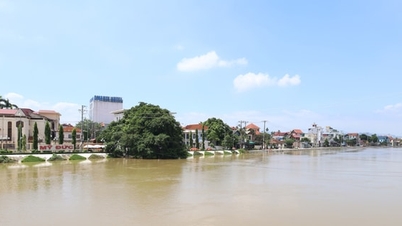



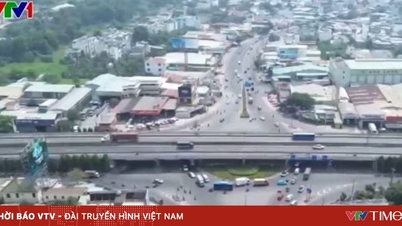



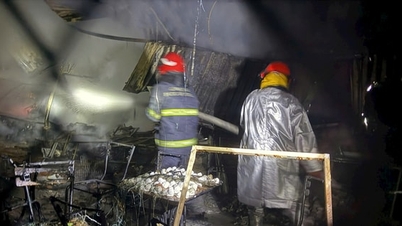



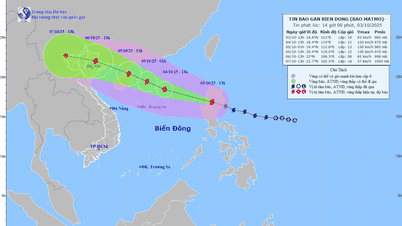
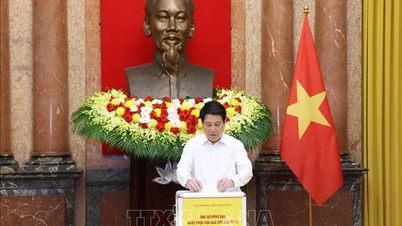


















































































Comment (0)